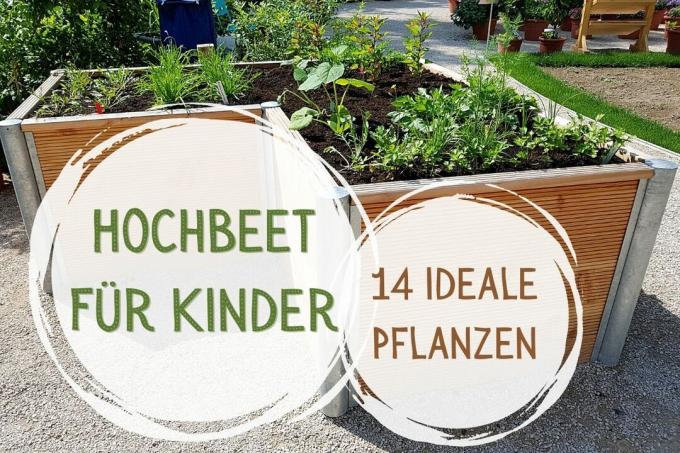
table of contents
- Leafy vegetables and salads from F to M
- Leaf vegetables and salads from P to S
- Vegetables and legumes from B to G
- Vegetables and pulses from K to P
- Vegetables and legumes from R to Z
- fruit
- frequently asked Questions
Children also enjoy gardening and are happy that delicious fruit and vegetables grow from small seeds. With a first raised bed, you slowly lead the children to gardening. Choose varieties that are fast-growing, easy to care for and popular with children, so that the little ones stay motivated.
In a nutshell
- ideal dimensions: approx. one meter high and just as wide
- put many different plants in it
- should be non-toxic!
- Fast growing, easy to care for and tasty
- Let your child have a say
Leafy vegetables and salads from F to M
Lamb's lettuce
Many children like the slightly nutty lamb's lettuce, also known as "Rapunzel salad".
- sow in the harvested raised bed in August or September
- harvest in winter
- Put some spruce twigs on the plants when frost threatens
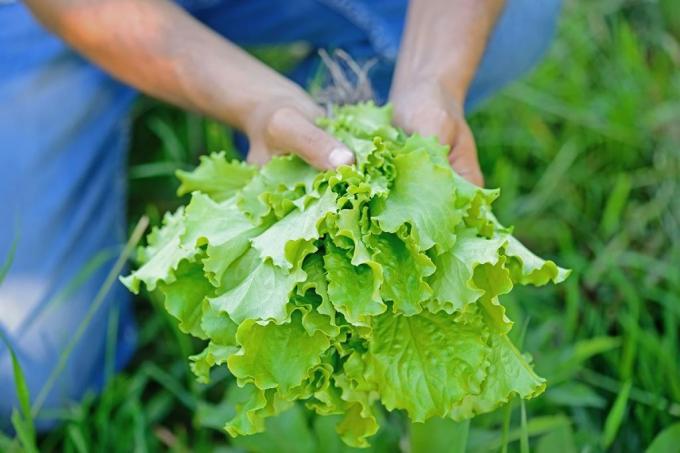
Lettuce
Lettuce is a grateful vegetable that is popular with children, as it can be planted in the raised bed as a stopgap between beans, strawberries, kohlrabi, spinach, radishes and tomatoes.
- very rapid growth
- Harvest within five to seven weeks
- very easy to care for
- Keep the soil evenly moist
Tip: Lettuce and parsley don't go very well together, which is why you shouldn't place these two plants as neighbors in the raised bed.
Swiss chard
Of these leafy vegetables rich in vitamins, the 'Bright Lights' variety with its pretty, rainbow-colored stems is particularly recommended for children.

- sow directly into the raised bed between April and July
- current harvest possible
- just cut off the outer leaves
- Leave the "heart" standing.
Tip: The broad leaves are prepared like spinach, the thick stalks like asparagus.
Leaf vegetables and salads from P to S
Picked and cut lettuce
In contrast to lettuce, plucked and cut salads do not form heads. Instead, the leaves are picked or cut and grow back permanently. This means that your child can harvest more often with just one sowing, especially since the different varieties grow very quickly and require little care. It is best to sow a row of lettuce as a raised bed border. Particularly recommended varieties are:
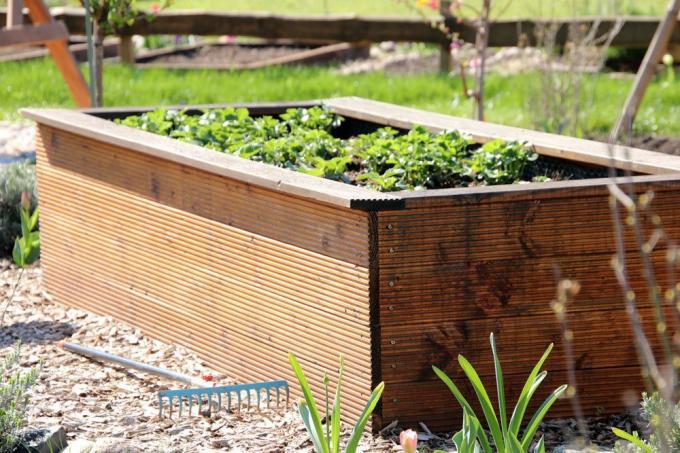
- 'Hollow-leaved butter'
- 'Krauser Yellow'
- 'American brown'
- 'Lollo Rossa' (red-brown, curly rosettes)
- 'Lollo Bionda' (yellow-green, curly rosettes)
- 'Baby Leaf'
Good neighbors include fennel, kohlrabi and radishes.
spinach
Contrary to what is rumored, many like children spinach Very popular, especially as a creamy sauce with pasta or, very classic, with potatoes and egg.
- ideal plants for a children's bed
- easy to care for and fast growing
- can be sown in early spring, summer and autumn
- Thrives with strawberries, radishes and tomatoes
- do not plant with Swiss chard
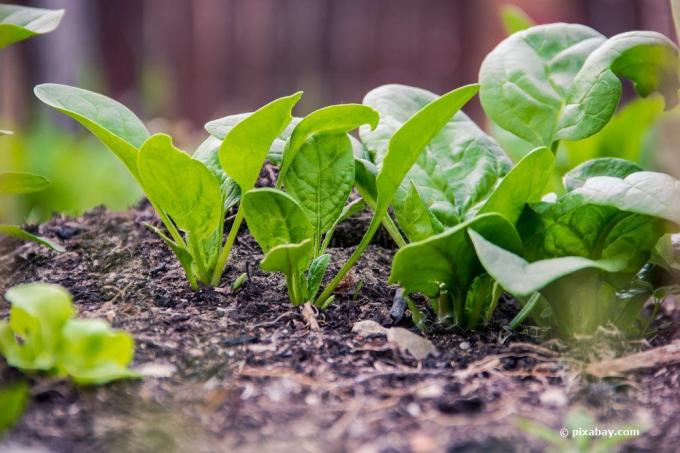
There are many varieties that are perfect for different times of the year, for example:
- 'Matador' (spring and autumn sowing)
- 'Winter Giants' or 'Verdil' (autumn and winter sowing)
- 'Rico' (all year round)
Note: Spinach should not be sown on freshly filled and therefore nutrient-rich raised beds, as the plants are very sensitive to nitrogen. Ideal plants for reseeding.
Vegetables and legumes from B to G
French beans
In contrast to runner beans, bush beans do not need any climbing support and can therefore also be cultivated in raised beds.
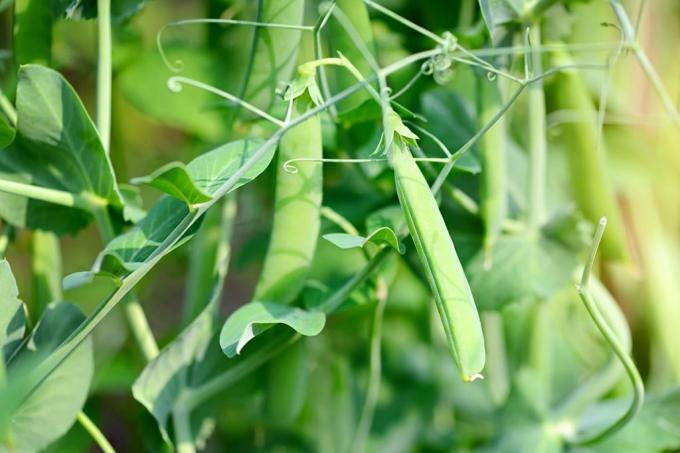
- green, yellow, purple and red speckled varieties
- sow directly into the bed for the first time from the beginning of May
- Re-sow again between June and the beginning of July
- good neighbors: strawberries, cucumber, kohlrabi, tomatoes, salads and beetroot
Note: With legumes - which includes peas as well as beans - you should avoid nitrogen fertilization, and the substrate in the raised bed should not be too rich in nutrients.
peas
Sweet sugar peas such as the 'Oregon Sugar Pod' variety, which is very popular with children, are ideal plants for raised beds, provided you pay attention to the height.
- Climbing plants need supportive climbing aid
- for example from rice or wire netting
- medium-high or low varieties even without a climbing aid
- thrive next to fennel, salads, kohlrabi and carrots
Tip: In addition to sugar peas, marrow peas are also good for children. These taste very sweet and tender as long as they are harvested young and green.
Cucumber
Even Cucumbers are popular with children, and the vegetables can also be grown on the raised bed. Bring the plants to the windowsill from April and place them in the bed from the end of May. Cucumbers are climbing plants, but their height is not a problem: just let them climb down the raised bed walls. Alternatively, you can let them grow up on a lattice.

These varieties are recommended for children:
- 'Passandra' (early-bearing mini cucumber)
- 'Delikatess' (proven variety)
- 'Perisaka' (proven, short to medium length)
Tip: Cucumbers thrive next to dill, sweet corn and peas.
Vegetables and pulses from K to P
Kohlrabi
Tender, young Kohlrabi is a delicacy - and can be grown in a raised bed because the fast-growing tubers do not need their own bed.
- welcome "stopgaps" between other plants
- good neighbors: u. a. Radish. Beans and lettuce
- New sowing possible from spring to late summer
tip: Most of them throw kohlrabi leaves away or feed them to the rabbits. The delicate leaves contain a lot of iron and can be eaten raw or steamed.
Carrots
Children love carrots, which is why the not entirely uncomplicated vegetables should not be missing in the children's bed.
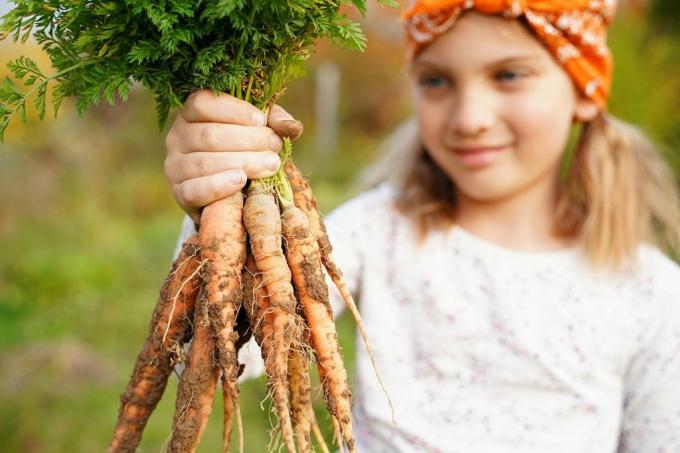
- germinates very slowly
- takes up to four weeks to rise
- Mix a few grains of radishes into the seeds as a “marker”
- come out quickly and show the course of the series
- Radishes can be harvested faster
- shorten the waiting time.
There are numerous types of carrots that can be grown from early spring to autumn.
Tip: Round varieties such as the tried and tested 'Pariser Markt' can be harvested after around 75 days, while those with long roots take longer.
paprika
Sweet, red bell peppers are perfect for the nursery, because most kids like the lovely sweet peppers very much.
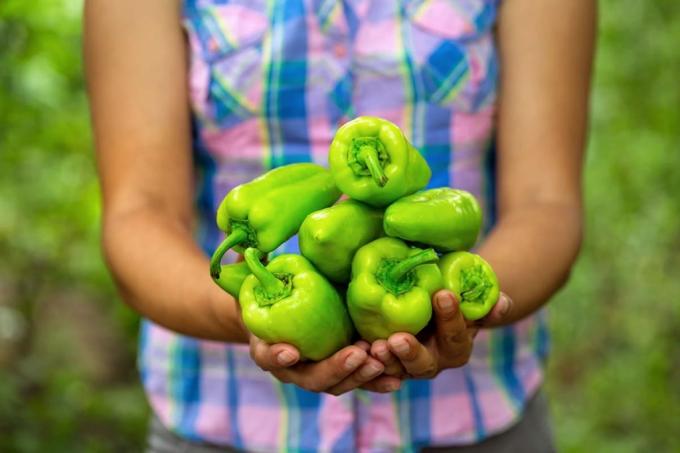
- prefer on the windowsill
- after the ice saints into the open
- needs a lot of sun and warmth
- water and fertilize regularly
- bushy growth
- 40 centimeters of space in all directions
Vegetables and legumes from R to Z
radish
radish comes in many varieties and can be grown from early spring to autumn.
- ideal plants for children
- are easy to care for and fast-growing
- good neighbors: beans, peas, carrots, lettuce, spinach and tomatoes
Tip: Radishes should not stand too close together, otherwise they will not develop round tubers. Therefore, pluck out seedlings that are too close together (less than five centimeters apart).
tomatoes
Bush tomatoes such as 'Balkonstar', 'Hoffmanns Renita' or 'Rotkäppchen' or Small-fruited fruit tomatoes such as currant or cherry tomatoes do not need climbing support because of their bushy growth, but can simply grow in the bed. The small, sweet fruits migrate directly from the bush into the child's mouth.
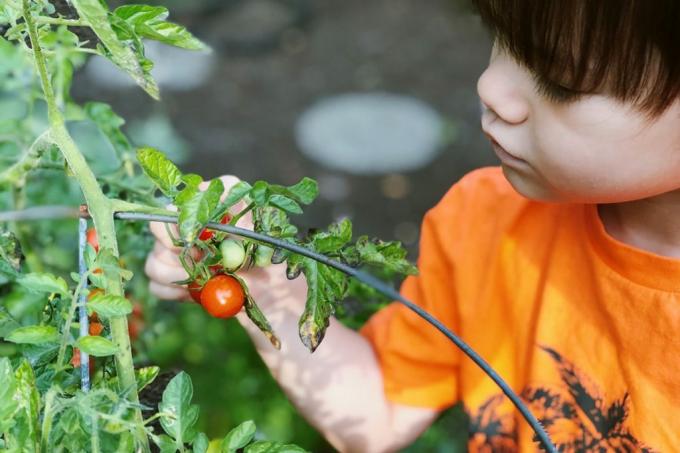
- sunny, warm location
- Rain protection required to avoid brown rot
- Heavy eater, must be fertilized regularly
zucchini
The "little pumpkins" grow bushy and produce numerous fruits non-stop - so your child can look forward to frequent harvests. A single zucchini plant in the raised bed is enough for a whole family, especially since the plants grow continuously and can reach considerable heights.
- at least one square meter of space per plant
- need a lot of water
- fertilize regularly and vigorously
- do not plant together with ornamental gourds
Sweet corn
Tender, sweet delicacy maize can be grown in a raised bed that is not too high and finally harvested between August and September.

- needs a lot of sun and strong soil
- Heavy consumers, fertilize well with compost
- Sow in early to mid-May
- good neighbors: beans, cucumbers, melons, tomatoes, zucchini
fruit
Strawberries
No nursery without it Strawberries! So-called monthly strawberries, which, by the way, are one of the more frequently bearing varieties and bloom and fruit continuously between June and late autumn, are particularly suitable. Recommended varieties are, for example:
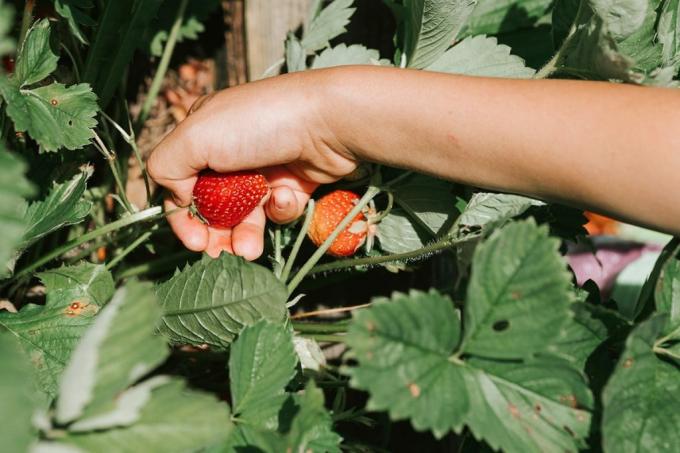
- ,To reprimand'
- ,Alexandria'
- 'Sperlings Punching Magic'
- 'Ostara'
frequently asked Questions
Children especially like herbs such as parsley (which are available in curly and smooth varieties), chives, peppermint and garden cress. These are easy to care for, grow quickly and also thrive in raised beds.
Naturally! Species like marigold or Tagetes (Marigold) are even beneficial in the raised vegetable bed, as they keep pests away. To do this, they attract bees, bumblebees and butterflies, which your child will love to watch. Nasturtiums are also great to grow in the nursery. Not only does it look pretty, it is even edible.
Make sure that your child can easily reach the raised bed without a stool (risk of accident!). But not only the height should be right, it must not be too wide either: a width of a maximum of one meter is ideal so that the short arms can reach everywhere.



